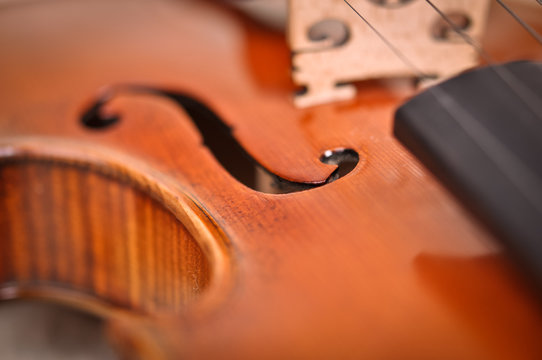Playing the violin undoubtedly requires excellent skill, a good ear for music, and impressive powers of concentration to allow the violin player to produce the splendid music strains that are associated with an impeccably played violin piece. The particular sound produced by a violin is quite distinct, unique from all other instruments found in the orchestra, and totally different even from the music instrument family to which it belongs: the string instruments.
This unique sound is as much a boon to the violin as it is a curse. Played badly, the violin can be one of the most painful instruments to hear, since a badly played mittenwald violin can make a sound that can be described as anywhere between tearing metal and a very irritable cat. Compared to the guitar, the violin is considerably more difficult to manipulate, since the strings are closer together, making it quite a task to hold onto the needed string when playing. Combine this with the fact that the violin is played with a bow, and almost all will agree that the violin is definitely not something you learn to play without considerable studying and practice.
This is the reason why violin instructors have their students practice playing through a series of violin exercises designed to limber the hands and coordinate the movement of the fingers and hands while playing. These are the essential movements made when playing the violin. The violin exercises are also designed to allow the player to develop better hand-eye coordination since a lot of musical pieces written for the violin involve quick, sharp movements which could prove to be quite difficult when you are looking at a conductor, your musical piece, and maybe stealing glances at your violin as you play.
Here are some violin exercises that instructors normally have their students do, as well as a brief explanation of why it needs to be done:
Violin Holding Arm Exercise
Depending on the length of the piece being played, a player may have to hold up the violin to their shoulder for an extended period of time, and despite the fact that violins are among the lighter instruments in terms of weight, holding it in position for long periods can be quite tiring and often painful. Violin exercises that train the shoulder, holding arm, and chin to hold the violin in place for long stretches of time will greatly help the player.
Violin Playing Arm Exercise
While one hand holds the violin in place, another hand holds and moves the bow to produce the music. While this may not seem like much effort to those watching a person play the violin, doing it for an extended period of time while concentrating on the quality of the sound is quite stressful and tiring work. Instructors try to alleviate some of the stress by allowing the playing arm of the students to develop a measure of strength and familiarity of movement so as to make the playing more natural and less stifled.
Breathing Exercises
Sometimes a violin player can be so focused in playing that they literally forget to breath, which is why there is a need for breathing exercises, as mundane as that may sound. There are also some movements which will restrict the breathing movement, since some pieces call for irregular movements which may be adversely impacted if the violin player tries to draw in a breath at the wrong time. Regulated breathing is perfected by practicing breathing exercises, allowing the violin player to learn to draw in breaths at intervals that match the rhythm of the music.






